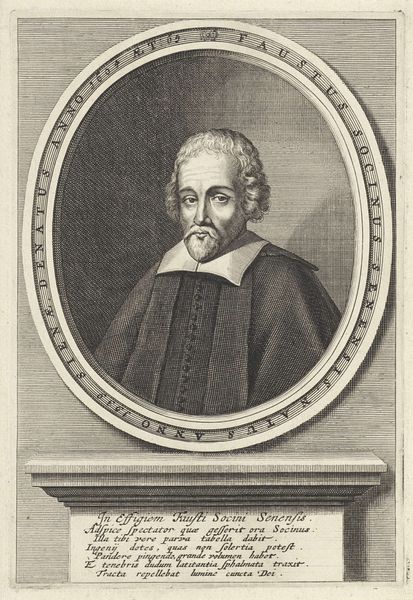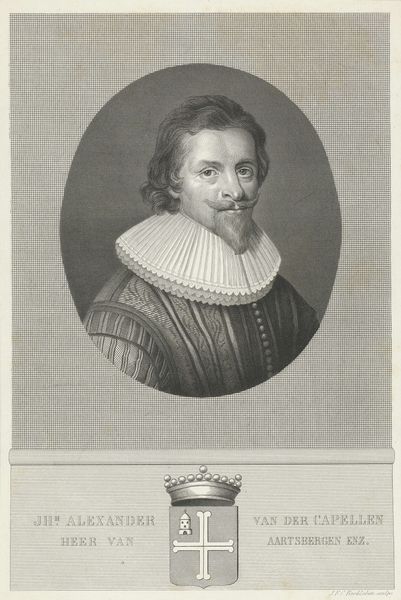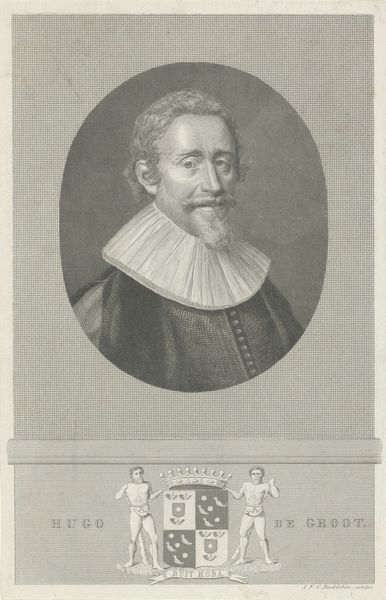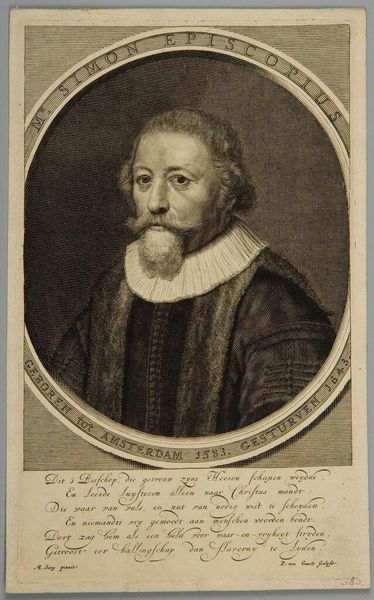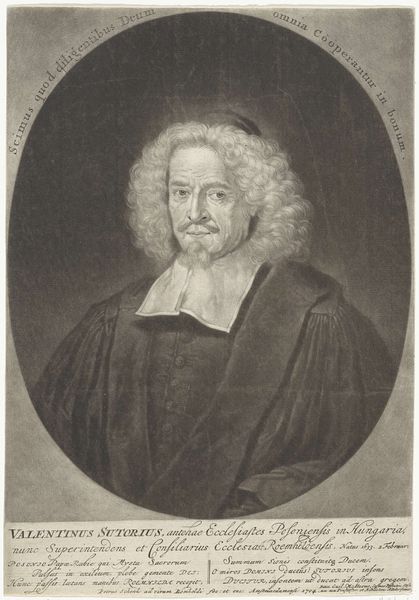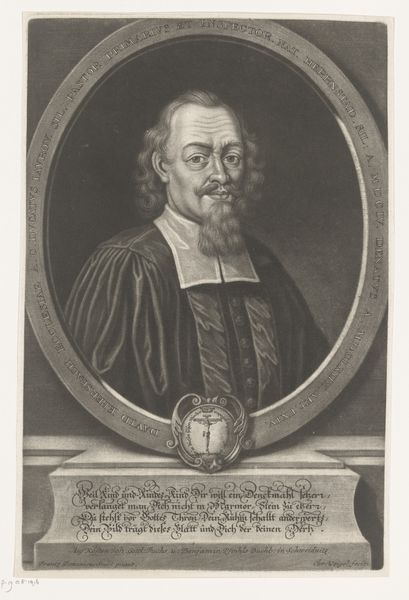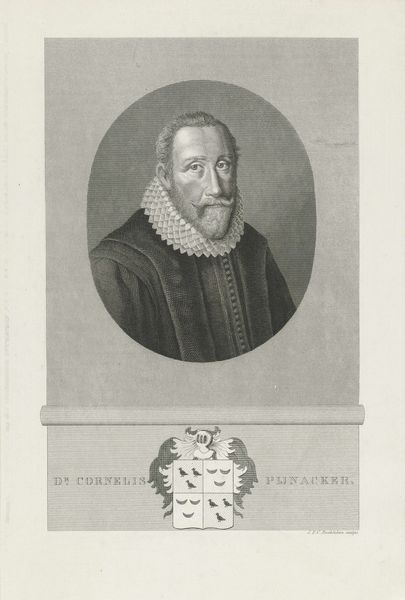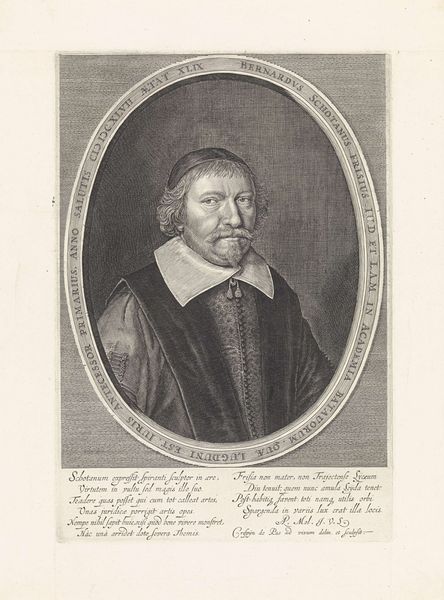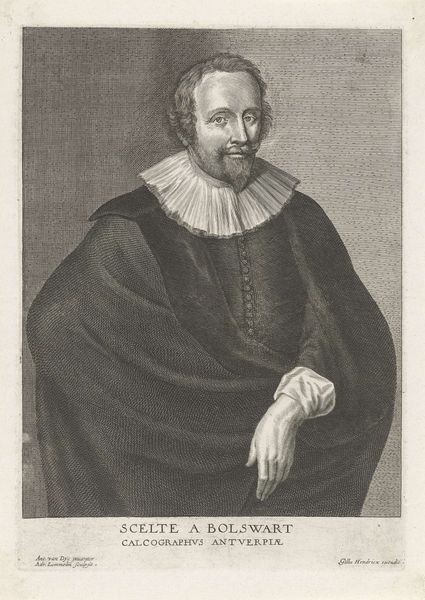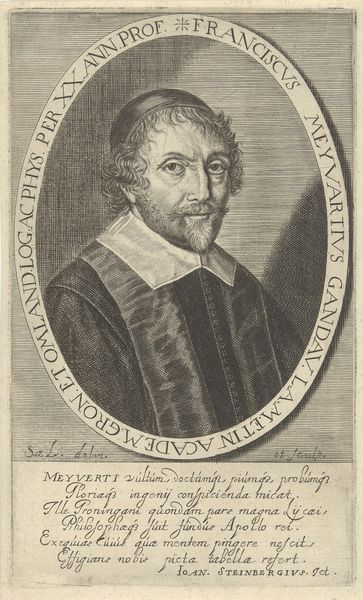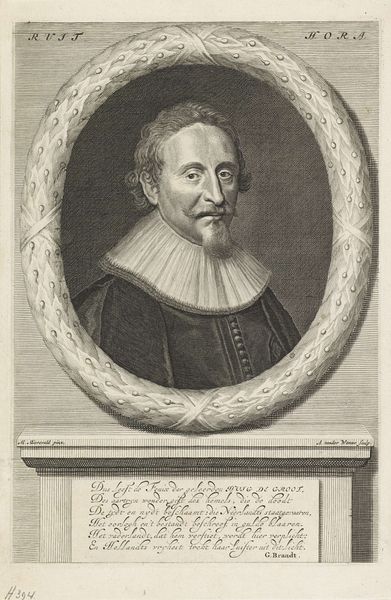
print, engraving
#
portrait
# print
#
old engraving style
#
historical photography
#
history-painting
#
engraving
#
realism
Dimensions: height 218 mm, width 151 mm
Copyright: Rijks Museum: Open Domain
Curator: This print, rendered using the engraving technique, depicts Simon Episcopius. It was created sometime between 1855 and 1857 by Jan Frederik Christiaan Reckleben and is now held at the Rijksmuseum. Editor: It has an archaic feeling, the stern but thoughtful pose is amplified by the stark contrasts afforded by the engraving technique. The image overall is formal and reserved, as you would imagine for the time and subject. Curator: Indeed. The engraving meticulously captures Episcopius, known for his prominent role in the Remonstrant movement. His features are carefully detailed – that ruff, that moustache. These are intentional elements contributing to the construction of his image as an intellectual and leader. The symbolism, of course, operates on various levels, all referencing back to this idea of leadership. Editor: And beyond simple portraiture, we're looking at the image as an assertion of cultural power, even centuries after his death. Think about how such engravings circulated, establishing and solidifying reputations. These kinds of historical depictions had a role in building cultural memory itself. I think it presents Simon in the old and strict historical ways Curator: Precisely. Episcopius’ legacy lived on through images like this, constantly reaffirming his status within a specific theological tradition, and to show off just how grand that history is with a well made print such as this. What do you make of the oval frame device? Editor: It functions as a kind of symbolic boundary. Separating the historical figure from the present gaze of the viewer. Though, simultaneously, framing him enhances the sense of importance and, perhaps, a slight idealization. What do you make of the rendering of heraldry? It sits uneasily between functional and purely decorative to my mind. Curator: Agreed, the coat of arms seems to provide a historical anchor, attempting to solidify Episcopius's lineage and authority. The symbol grounds the portrait. As a physical object, the print, too, had its own social life, moving between collections, reinforcing his enduring influence. It tells us of the desire to assert control over collective memory through visual representation. Editor: I agree, thinking about its historical function and what it meant for cultural legacy I’ve reached an increased admiration for such a stern engraving that has served as not only a portrait but a vehicle for ideology through this particular image. Curator: I would agree, these symbols connect past and present and underscore the continuing power of images to influence understanding.
Comments
No comments
Be the first to comment and join the conversation on the ultimate creative platform.

